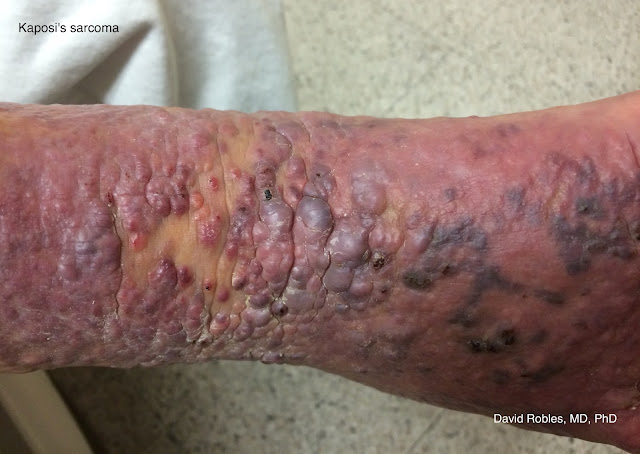Kaposi's sarcoma is a tumor caused by human herpes virus 8 (HHV8). It arises in the cells that line the blood vessels (known as the vascular endothelium). Moritz Kaposi, a Hungarian dermatologist in 1872, originally described this condition. In the 1980s, it became widely known as one of the AIDS defining illnesses. Kaposi’s sarcoma can present with cutaneous lesions with or without internal involvement.
Four subtypes have been described:
- Classic KS, affecting middle aged men of Mediterranean or Jewish origin
- African endemic KS
- KS in immunosuppressed patients
- AIDS-related KS
AIDS-associated KS can have a more aggressive course with a more widespread distribution pattern, including the oral cavity. With the advent of antiretroviral therapy. AIDS-related KS has diminished. KS is a “radio-responsive tumor,” which means radiation therapy is effective in the treatment of skin (cutaneous) lesions.
Classic KS usually follows a progressive but slow clinical course. Patients with localized lesions can have them surgically removed. Radiation therapy is also effective and can result in symptom relief and reduction of tumor size.
Follow David Robles, MD, PhD






Comments
Post a Comment